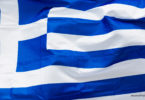One of the first things a lot of beginning genealogists want to explore is their family crest or coat of arms. It is a mistaken belief among beginners that every family has one of these somewhere in their ancient history, and newcomers to the genealogical field naturally want to celebrate their family by bringing their coat of arms back to life. This is a wonderful ambition, and if your family truly does have a coat of arms or crest that you are entitled to use, you should learn about it and display it proudly.
However, actually having a coat of arms or family crest is much rarer than you might imagine. Having the hereditary right to use it is even rarer. While there are many companies out there that are willing to sell you all kinds of merchandise with your supposed “family crest” on it, the vast majority of these companies are not engaged in legitimate genealogical research. The coat of arms or crest you get may or may not belong to your family (and it might be made up completely by the company selling it to you), or you may not have the hereditary right to use it. If you really want to know something about heraldry (the art of studying coats of arms and crests) and how it applies to your family, read on. It’s a fascinating tale.
What is a Coat of Arms?
Historically speaking, a coat of arms is a design on the shield of a medieval knight. The design was unique to an individual. Sometimes, the individual only had rights to the coat of arms during his lifetime. Other times, he was allowed to pass it down to his descendants, and it became the family coat of arms. As time went on, some nations and even corporations adopted their own coats of arms. The symbols on a coat of arms are meant to represent the achievements of the person, state, or corporation to whom or which the arms were granted.
The first documented use of coats of arms in medieval times is on the Bayeux Tapestry, which dates from the 11th century A.D. and chronicles the Norman invasion of England. Some of the knights on the tapestry are seen holding shields with heraldic insignia on them, usually painted crosses (these were the earliest and most basic types of coats of arms).
The use of coats of arms became pretty common by the 12th century and was used by many knights and minor feudal lords who went into battle. Within another century, families were using coats of arms (usually ones granted to an ancestor a century before) as the family logo, and sewed these arms onto flags that flew above their castles and manors. Only the highest classes of people in medieval Europe used coats of arms, as they were the only one with ancestors distinguished enough to have been granted them by the kings of the time. Once a family started using a coat of arms, it was passed down through the generations, from one to the other, even down to the present day.
Who Had the Right to Use Coats of Arms in Medieval Times?
An individual had to be granted a coat of arms by a ruling monarch to be able to legally use it. After that, the laws or customs governing who had the right to use them varied by country. In most of Europe, only the aristocracy could use them. In the Germanic countries, both aristocrats and free citizens who weren’t noble, but who had distinguishing accomplishments, could be granted them and use them.
In England and Scotland, only the person who was originally granted the coat of arms could use it as it was. While coats of arms were made hereditary in England by King Richard I in the 13th century during the first Crusades, each generation had to change the coat of arms slightly to distinguish it from the generation prior. Women were also allowed to bear their own coat of arms, as long as it incorporated unique designs along with the main family design so that the arms distinguished them as female bearers of the arms.
Eventually, churches and towns were granted the right to use coats of arms to identify themselves. Universities and some companies that had royal charters were also given coats of arms, which became the prototypes of the modern corporate logo.
The Legal Use of Coats of Arms Today
Throughout the centuries, the use of coats of arms was governed mainly by custom, though a few places, mainly England, did have governmental regulations regarding their use. Today, the use of coats of arms is more closely regulated, as many of them have been trademarked. The owners of those trademarks, be they families or organizations, are the ones who have the legal right to say how their arms can be used. England and Scotland have heraldic authorities which grant and regulate the use of coats of arms. Sometimes, these authorities grant new arms to new individuals, families, or organizations, even into the present day. A coat of arms doesn’t necessarily have to be ancient to be legitimate in England and Scotland.
What is the Difference Between a Coat of Arms and a Family Crest?
The family crest is part of the overall coat of arms. It is the three-dimensional object at the top of the arms… the top of something is often referred to as a crest, such as the crest of a wave on the ocean, or the crest of a mountain or building. The crest is an important identifier for what the person who originally received the arms did to receive it and has often been used on its own as a smaller family logo over the centuries, without the full arms beneath it. As centuries passed, the original meaning of the crest was often forgotten, and it simply became an identifying symbol for a family of high rank or nobility.
Laws Regarding Coats of Arms in Use Today
Most European countries adopted the use of coats of arms over the centuries in the Middle Ages. Today, nearly anyone can claim the use of those arms, except in cases where they are trademarked, as most European countries no longer regulate their use (and some countries, like Italy, do not recognize them at all, leaving anyone free to adopt a coat of arms as their own). In the United Kingdom, however, it is different. There are still laws there governing the use of coats of arms that must be followed by anyone in any part of the world who wishes to use them.
The most important thing to remember about coats of arms in the United Kingdom is that there is no such thing as a coat of arms that is granted to a surname. They are granted to individuals only. To legally use the arms, a person must be the person to whom the arms were originally granted or a direct male-line descendant (in a legitimate line of descent…no illegitimate lines are eligible for use of the arms) of that person.
The College of Arms in the United Kingdom can make new grants of arms even today. To be granted a new coat of arms for you or your family, you must submit a formal request to the College of Arms directly. This applies to individuals, corporations, and private organizations.
Americans who can prove a direct legitimate descent from a subject of the British Crown during a period of British rule (such as Americans with ancestors in America when it was still a British colony, pre-Revolutionary War) can petition the College of Arms for an Honorary Arms that will be granted to one person. That person then has the right to pass down the arms through the legitimate male line of their family. This rule of legitimate male-line descent is why some people with the same surname have the legal right to use a coat of arms in the UK, and others with the same surname do not.
The Parts of a Coat of Arms
A real coat of arms is divided into several parts. Each part tells you something about the individual, family, corporation, or organization to which it was granted. The parts of a coat of arms are:
- The Motto: This is the motto of the person or entity who owns the arms. It can be anything they want to say that they feel represents them and/or their group or family. The motto may or may not be placed on a design of some sort, and it is located at the very top of the arms.
- The Crest: Located directly under the motto, this is a three-dimensional symbol of some kind that identifies an achievement of the owner of the arms.
- The Shield Elements: Since arms were originally painted on shields, the shield is now a basic part of any coat of arms. It is a miniature representation of what the original shield looked like (or would have looked like if the person or entity who was granted the arms ever went into battle). There may be several different designs on the shield, and their placement and colors tell a story about the origin of the arms.
- Supporters: These are usually two animals or people that stand on either side of the shield, supporting it. The animals or people used as supporters also tell part of the story of the origin of the arms.
Companies That Sell Coats of Arms and Family Crests Today
Nothing stops you from designing your own coat of arms and/or family crest. Just know that it is not a hereditary one and has no official or ancestral meaning. You can make one for yourself or your family and use it as a logo. Many companies online will help you design your own. It is the companies that sell you what they tell you is your official family coat of arms based on your surname that are not to be trusted.
As you have seen, only a certain few individuals are legally entitled to use an ancient and hereditary coat of arms. Companies that sell you merchandise with your supposed coat of arms on it are either using the coat of arms of a family with your same surname (and which you have no legal or hereditary right to use), or they are making one up for you and not telling you. They use all of the right parts of a real coat of arms, but the arms they are making for you are new, with no ancestral meaning to your family at all. Many companies have made a lot of money with this deception over the past several decades, as a renewed interest in heraldry began after WWII.
While there is nothing wrong with designing your own coat of arms for your family, it is unlikely you will discover you are entitled to use an ancient and established on that has been handed down for centuries through the same family. Your family might actually have a legitimate ancient coat of arms, but your branch probably doesn’t hold the right to use it. Only in a very few, exceptional cases will you find you belong to a line that does have the right to use an ancient coat of arms. If you do, display them proudly, because they are part of a rich and lengthy heritage few can claim or prove.
Heraldry is a real art. There are organizations in the United Kingdom and other European countries that can help you interpret the meaning on a legitimate coat of arms if you discover one in your family. Even if you don’t have the right to use it, it is still interesting to know the meaning behind the arms your ancestors used. If you decide to buy a coat of arms from an online company (or offline company), just know it will likely be a new coat of arms and not something ancient and legitimate.
It doesn’t mean you can’t start using it as part of a new family tradition, though. By all means, start your own coat of arms now and pass it down through your family. Just be sure you record where and how the arms were started, and what the symbols you chose to put in it mean, so future generations will know how your family got its coat of arms.







